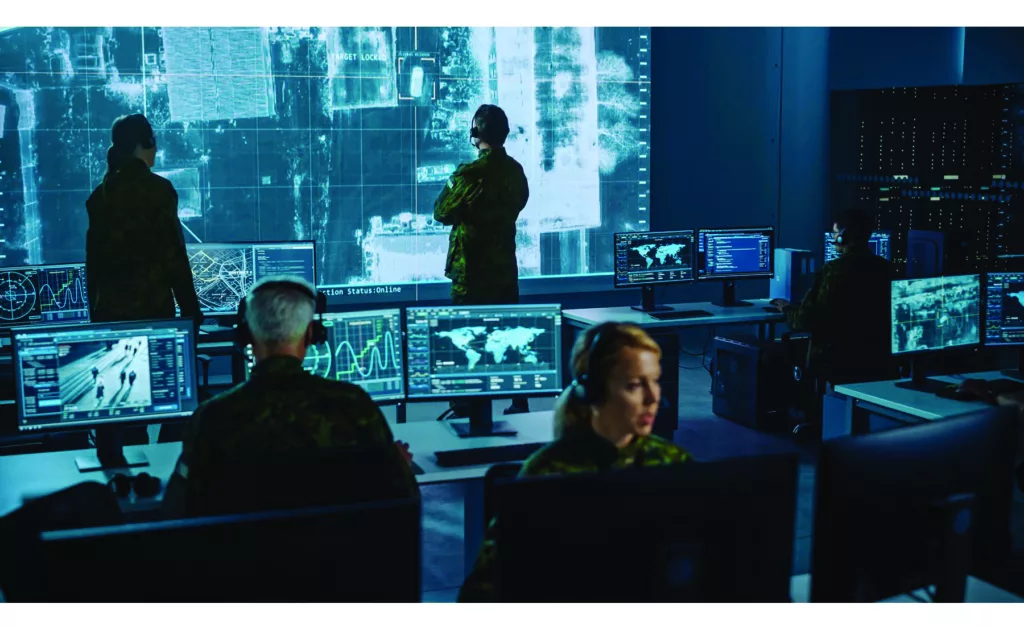 Rochester Electronics offers purchasing professionals in the military and aerospace sectors a guide to supply chain management best practices for semiconductor components
Rochester Electronics offers purchasing professionals in the military and aerospace sectors a guide to supply chain management best practices for semiconductor components
The military and aerospace industries have long had a close connection to the semiconductor sector. Many programs of 60-years ago helped drive early semiconductor development. Over the decades, both industries experienced tremendous advancements. However, over recent decades, the industries’ requirements and objectives have diverged.
Today, top semiconductor manufacturers are driven by high volumes, higher performance, lower power requirements, smaller plastic packages and cheaper costs. Expected product lifecycles can be as short as one year or long as five to ten-years. Military and aerospace industries can certainly benefit from technological advancements but semiconductor lifecycles do not align to most programs.
Supply chain management is facing greater challenges than ever. Military and aerospace systems require a longer development time and can have a longer product lifecycle than any other industry. The supply chain faces: component obsolescence in aging systems; prioritising the funding for long-term procurement/maintenance; coordinating the timing of and transition to newer systems; and two-year budget cycles. Consequently, supply chain management must be treated as a critical, integral part of any program.
The military and aerospace industries are at a transition point where they must consider the benefits of out-sourcing and COTS (commercial-off-the-shelf) products versus organic development and controlled solutions. Designing with multi-sourced solutions and selecting the right partnerships are also key parts of the decision process. The correct balance will vary depending on product and program but, as seen in recent years, there are benefits to maintaining control (particularly domestic control).
From the perspective of semiconductor components, supply chain management best practices include:
• Dual sourcing: When possible, procure at device level or from dual authorised supply chain sources
• Stock in the market: Ensure up-to-date visibility of all instantly available stock if supplies fail
• Advanced warning system: Share critical parts lists with trusted suppliers and partners, who can advise on extended lead times or other market issues that threaten supply chains
• Track component lifecycles: Do not solely rely on the algorithms-based lifecycle tracking. Seek support and confirmation from authorised end-of-life suppliers and partners. For example, components correctly listed ‘discontinued’ by the OCM may still be in production from authorised end-of-life sources, 10 to 20-years after their formal EoL
• Program protection plan: While PPPs are strongly suggested for MIL programs, they need to be implemented to be effective. Partnering with an authorised aftermarket manufacturer should be part of the PPP
Rochester Electronics has always aligned with military and aerospace industries’ sourcing requirements. As an AS6496-compliant distributor and licensed manufacturer, Rochester offers military-grade semiconductor and package solutions, even after the original OCMs have discontinued them.
Rochester stocks millions of military-grade components in its daily inventory, comprising thousands of distinct part numbers. The company’s in-house high-reliability hermetic assembly line offers package styles including ceramic DIP, side brazed DIP, flat pack, CQFP, PGA, ceramic leadless chip carrier and metal can. This allows for continued manufacture of previously obsolete components, all produced in partnership with the original OCM to provide a 100 per cent authorised and guaranteed solution.
Custom flows are also offered, built to match the needs of source-controlled drawings based on Rochester’s commercial and industrial inventory. In-house qualification and test facilities comply with industry standards. Rochester is a QML manufacturer certified by DLA Land and Maritime to MIL-PRF-38535, offering Class Q and Class V microcircuits for military and aerospace applications.
Customers can leverage the company’s test and design engineering experience to help with alternatives (grades, speeds, finishes, packages) and creation of additional testing parameters to qualify alternate solutions.
Rochester also supports fundamental design changes, such as replacement of obsolete key components with ASIC solutions. It is possible to transition to an ASIC identical in fit-form-function with no software changes or errata. This means that aerospace DO-254 re-qualifications, even for safety-critical (DAL-A) applications, can be greatly simplified with minor changes.
